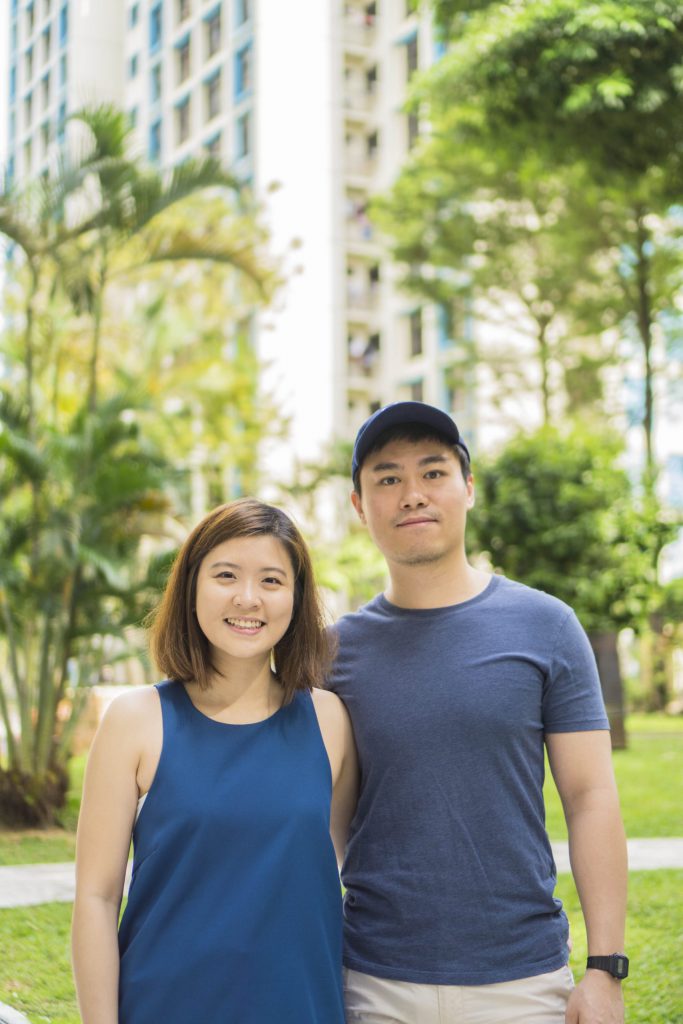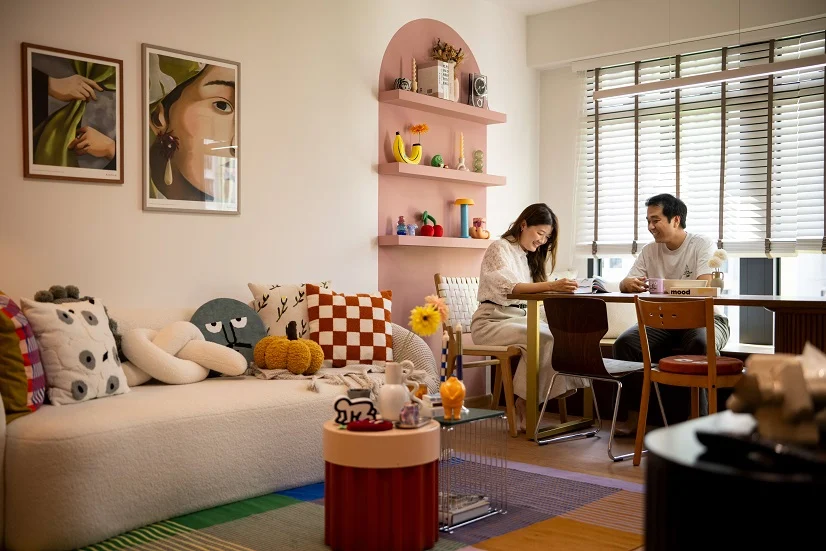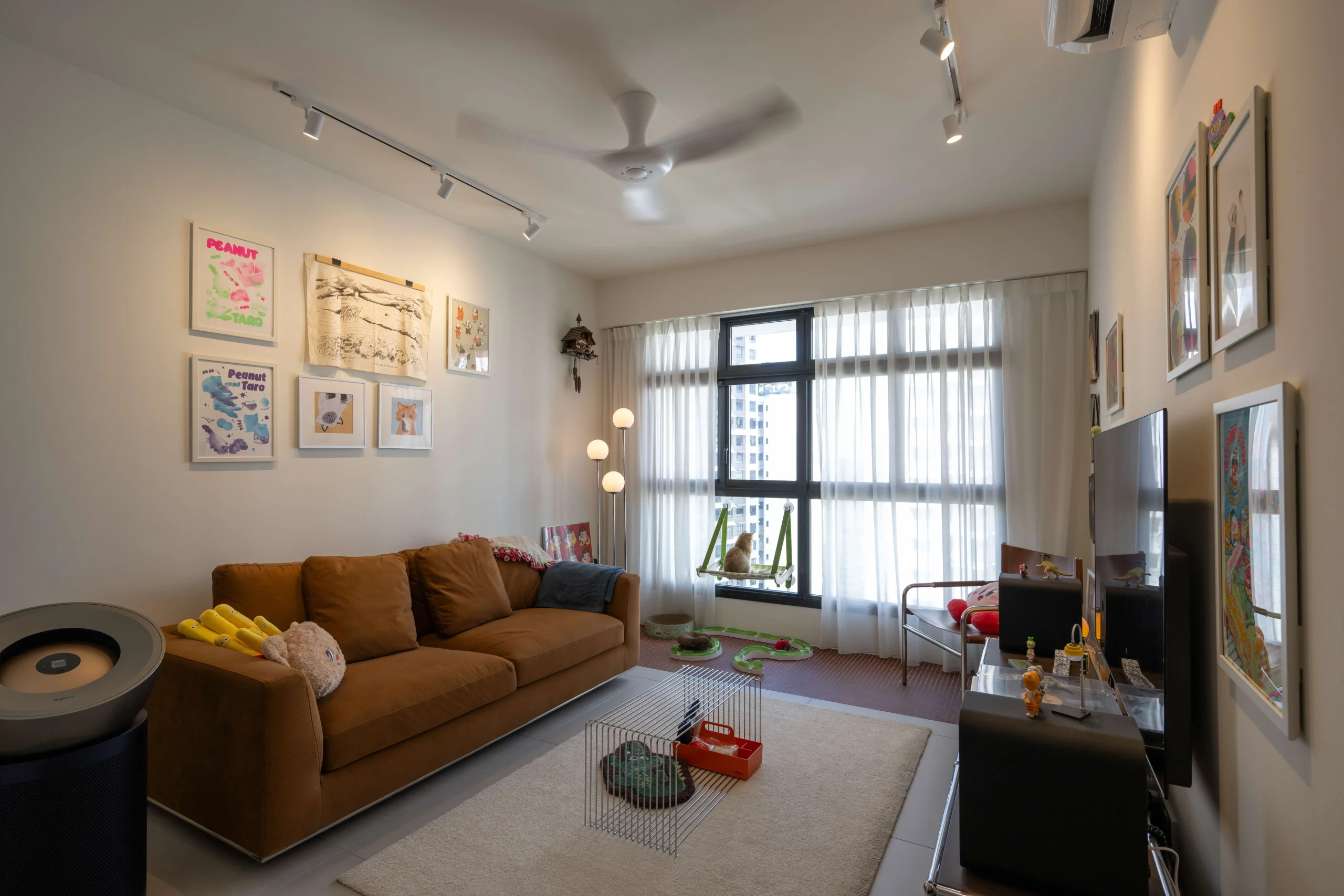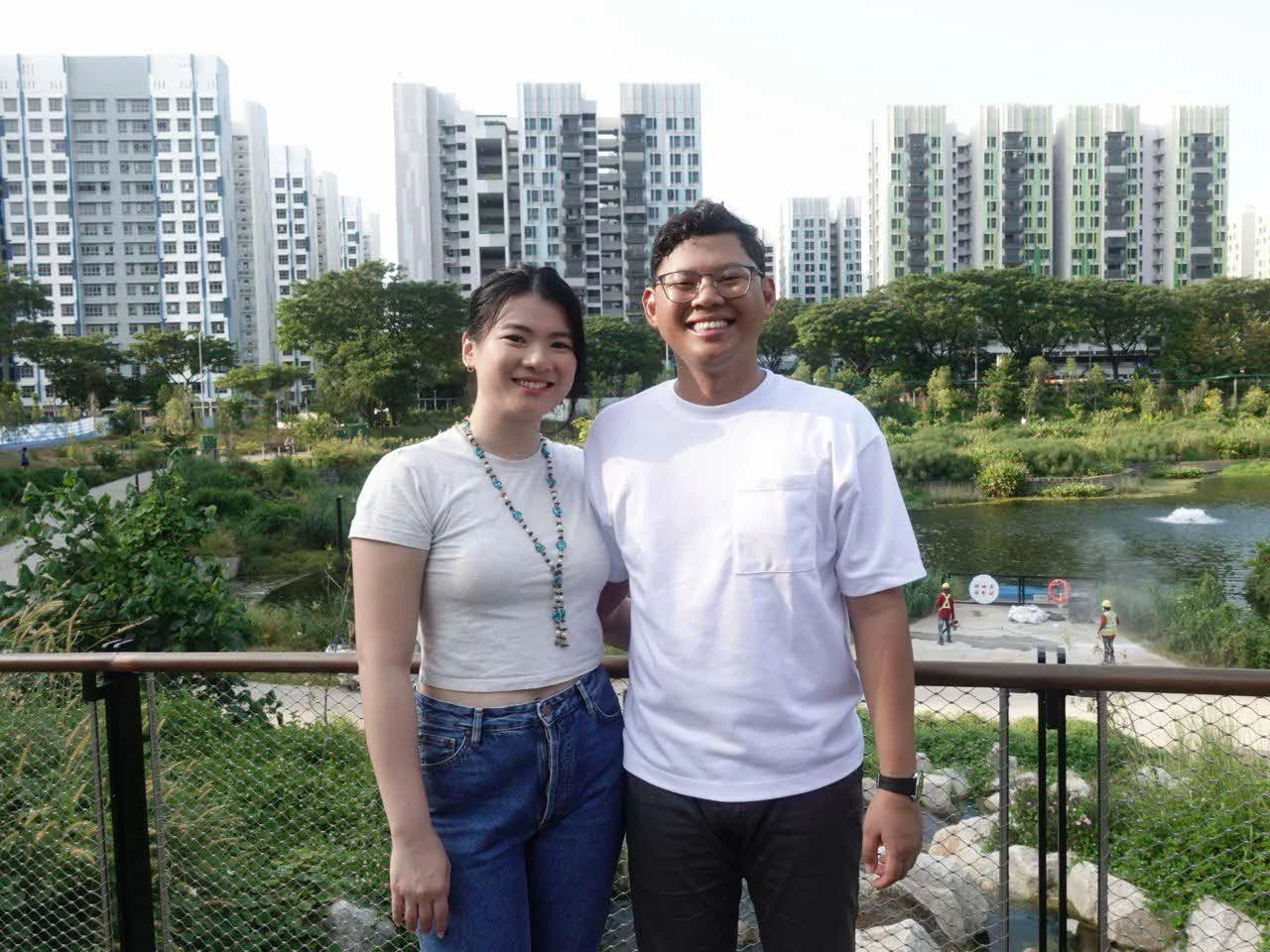From enjoying her neighbours’ delicious homemade agar-agar to hanging out after school with their kids, Beryl Tare has always enjoyed a close bond with her neighbours. “My neighbours had children that were around the same age as my sister and I, so we used to play together a lot, and our families were really close. They would offer us rides to school on rainy days and open their homes to us if we returned from school early and no one was home,” the 28-year-old recounts.

Beryl’s husband, 30-year-old Guan Xun, shares a similar bond with his neighbours. “Growing up, I often spent time playing with my neighbours’ children along the common corridor. My social circle has since expanded to include more members of the community – today, we play soccer at the street soccer court in the neighbourhood.”
Importance of a Connected Community
Currently living in Guan Xun’s childhood home at Toa Payoh while waiting to collect the keys to their new home, the couple enjoys being part of a closely-knit community.
“Toa Payoh is always bustling with activities. We often see residents having small get-togethers in the common areas such as void decks and the pavilions at the neighbourhood parksThe shopkeepers and hawkers know the residents by name – it’s heartwarming to see that the kampung spirit lives strong in this neighbourhood,” the couple says.

“Our neighbours feel like extended family members, and the common areas are like our shared living room – we also help each other out whenever one of us needs assistance,” Beryl adds. “Being part of a heartland kampung makes a big difference to our living environment and experience. We look forward to having an equally closely-knit community in our new neighbourhood!”
Creating Livelier Neighbourhoods
In fostering vibrant communities, HDB has designed a variety of communal spaces and facilities in all towns. From seeking respite at the pavilions to exercising at the fitness corners and communal gardening at rooftop gardens, these spaces encourage community interaction and bonding.

A prominent feature in all neighbourhoods, the playground has become more than just a play area for children, providing opportunities also for parents to mingle. Now, not only can residents enjoy the social space, they can also play a part in its creation.
In 2017, under the pilot Build-a-Playground project, over 1,800 Canberra residents gathered to conceptualise, design and assemble the first community-built playground in Singapore.


The project was one of the winning proposals under the Lively Places Challenge (LPC), an initiative that seeks to empower the community in creating livelier neighbourhoods. Residents came together to discuss and select the play components, and workshops were conducted to finalise the design of the playground.
The LPC encourages members of the community to work in teams to develop and implement solutions to enliven HDB spaces, with funding and training provided. Following its successful run, the LPC will be progressively rolled out to all towns.
“These initiatives create more opportunities for interaction within the community and foster a sense of ownership and belonging to the town,” Beryl says. “It would be nice to look at a playground and know that I helped design and build it.”
Making Places Together
Under the new Designing for Life (DFL) roadmap recently unveiled by HDB, residents will have more opportunities to participate in shaping public spaces in their towns. In addition to LPC, HDB will also set aside ‘White Spaces’ in new HDB precincts, for residents to collectively carve out what they would like to do with the common space.
“It’s nice know that the voices of residents like ours will be heard,” Guan Xun says. “Communal spaces and activities are important to foster a sense of kampung spirit – and it’s important that they are designed to suit the residents’ needs.”
To better understand the lifestyle habits of residents, HDB has also embarked on a New Urban Kampung Research Programme in collaboration with SUTD, to glean insights on residents’ sentiments towards the community and quality of life. The findings from this study will be used to review and refine future housing plans and designs, to help strengthen the community spirit in our towns.
In meeting new housing needs and building new generations of public housing, HDB has, since 2011, developed community-centric towns that are sustainable and smart. The DFL roadmap focuses on three areas – Live Well, Live Smart, Live Connected. For more on Live Connected, visit the HDB InfoWEB!



![[SL] MNH Banner](https://www.mynicehome.gov.sg/wp-content/uploads/2025/10/SL-MNH-Banner.webp)
